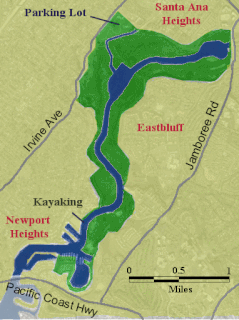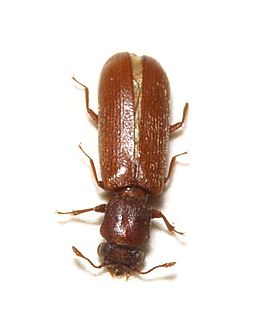
The University of California (UC) is a public university system in the U.S. state of California. The system is composed of the campuses at Berkeley, Davis, Irvine, Los Angeles, Merced, Riverside, San Diego, San Francisco, Santa Barbara, and Santa Cruz, along with numerous research centers and academic abroad centers.

The University of California, San Diego is a public research university in San Diego, California. Established in 1960 near the pre-existing Scripps Institution of Oceanography, UC San Diego is the seventh-oldest of the 10 University of California campuses and offers over 200 undergraduate and graduate degree programs, enrolling approximately 30,800 undergraduate and 8,000 graduate students. The university occupies 2,141 acres (866 ha) near the coast of the Pacific Ocean, with the main campus resting on approximately 1,152 acres (466 ha).

The University of California, Riverside is a public research university in Riverside, California. It is one of the 10 general campuses of the University of California system. The main campus sits on 1,900 acres (769 ha) in a suburban district of Riverside with a branch campus of 20 acres (8 ha) in Palm Desert. In 1907, the predecessor to UCR was founded as the UC Citrus Experiment Station, Riverside which pioneered research in biological pest control and the use of growth regulators responsible for extending the citrus growing season in California from four to nine months. Some of the world's most important research collections on citrus diversity and entomology, as well as science fiction and photography, are located at Riverside.

The Marlan and Rosemary Bourns College of Engineering, or commonly known as Bourns Engineering or BCOE, is an Accreditation Board for Engineering and Technology-accredited College of Engineering located in Riverside, California on the campus of the University of California, Riverside. The Marlan and Rosemary Bourns College of Engineering was established in 1989, and named in honor of Marlan Bourns, a B.S. physics graduate of the University of Michigan and Rosemary Bourns, founders of Bourns, Inc.
The Rausser College of Natural Resources (CNR), a college of the University of California, Berkeley, is the oldest college in the UC system and home to several internationally top-ranked programs. Rausser's Department of Agriculture & Economics is considered to be one of the most prestigious schools in agricultural economics in the world, ranking #1 according to the Journal of Agricultural and Applied Economics, #1 by the Chronicle of Higher Education, #1 by Perry for its Ph.D. programs and in International Trade, #1 by the National Research Council in Agricultural & Resource Economics, and #1 by U.S. News in Environmental/Environmental Health. In environmental disciplines, QS World Rankings recognizes the University of California, Berkeley, as the world's leading university in Environmental Studies with 100 points in Academic Reputation. U.S. News also ranks it as the best global university for environment and ecology. A study of AJAE authors and their university affiliations found it to have the highest number of pages per research faculty member.

The Upper Newport Bay is a large coastal wetland in Newport Beach, Southern California and a major stopover for birds on the Pacific Flyway. Dozens of species, including endangered ones, can be observed here. Upper Newport Bay Nature Preserve and Ecological Reserve represent approximately 1,000 acres (4 km2) of open space. The Upper Newport Bay was purchased by the state in 1975 for its Fish and Wildlife Department's Ecological Reserve System. In 1985 the upper west bluffs and lands surrounding the bay became part of an Orange County regional park, which offers outdoor activities such as bird-watching, jogging, bicycling, hiking, and kayaking. The Peter and Mary Muth Interpretive Center, located at 2301 University Drive, is open to the public Tuesday through Sunday from 10:00 AM to 4:00 PM. An organization known as the Newport Bay Conservancy (NBC) provides volunteers to answer visitors' questions and guide them through the various activities.
The history of the University of California, Riverside, or UCR, started in 1907 when UCR was the University's Citrus Experiment Station. By the 1950s, the University had established a teaching-focused liberal arts curriculum at the site, in the spirit of a small liberal arts college, but California's rapidly growing population made it necessary for the Riverside campus to become a full-fledged general campus of the UC system, and was so designated in 1959.
The UCR/California Museum of Photography (CMP) is an off-campus institution and department of the College of Humanities, Arts, and Social Sciences at University of California, Riverside, California, USA. The collections of UCR/CMP form the largest, most comprehensive holding of any photographic collection in the Western half of the United States. The growing UCR/CMP collections encompass every aspect of photographic arts, history, and technology.
Cicerone Field at Anteater Ballpark is the ballpark at the University of California, Irvine in Irvine, California, United States. It is the home stadium of the UC Irvine Anteaters baseball team. Opened in 2002, the stadium has 908 seats and can accommodate up to an additional 2,500 people on a grass berm.
The University of California Citrus Experiment Station is the founding unit of the University of California, Riverside campus in Riverside, California, United States. The station contributed greatly to the cultivation of the orange and the overall agriculture industry in California. Established February 14, 1907, the station celebrated its 100th anniversary in 2007.

The College of Natural and Agricultural Sciences (CNAS) at the University of California, Riverside, is a nationally unique academic division in that it combines the physical, biological, mathematical and agricultural disciplines under one organizational umbrella. The college is organized into 13 academic departments: Biochemistry, Biology, Botany and Plant Sciences, Cell Biology and Neuroscience, Chemistry, Earth Sciences, Entomology, Environmental Sciences, Mathematics, Nematology, Physics, Plant Pathology and Microbiology, and Statistics.

The Temecula Valley is a graben rift valley in western Riverside County, California.
The Graduate School of Education at the University of California, Riverside offers credentials and MA and PhD programs in various fields of teacher education and educational administration. Significant research centers include the California Community College Collaborative, a professional development, leadership training and policy research institute for the community college system, and the Copernicus Project, dedicated to increasing the quality of science educators and education. Also notable is a center dedicated to researching and supporting education for autistic children.
The main campus of the University of California, Riverside (UCR) is located within the city of Riverside in western Riverside County, three miles (5 km) east of downtown, and comprises 1,112 acres (4.50 km2) bisected by the State Route 60 freeway. Nearly half of the total area is devoted to agricultural teaching and research fields, most of which are located west of the freeway.

The UCR Citrus Variety Collection (CVC) is one of the most important collections of citrus diversity in the world. It is used for research, plant breeding, and educational extension activities on the UC Riverside campus in Riverside, California.

Lyctus brunneus is a species of beetle in the family Bostrichidae. It is a member of the subfamily Lyctinae, the powderpost beetles. It is known commonly as the brown powderpost beetle or brown lyctus beetle. Today it is distributed worldwide but it was probably originally native to the Neotropical region.
The Water Resources Collections and Archives (WRCA), formerly known as the Water Resources Center Archives, is an archive with unpublished manuscript collections and a library with published materials. It was established to collect unique, hard-to-find, technical report materials pertaining to all aspects of water resources and supply in California and the American West. Located on the campus of the University of California Riverside (UCR), it is jointly administered by the UCR College of Natural and Agricultural Sciences (CNAS) and the UCR Libraries. WRCA was part of the University of California Center for Water Resources (WRC) that was established and funded in 1957 by a special act of the California State Legislature and was designated the California Water Research Institute by a federal act in 1964.
The University of California, Riverside (UCR), School of Medicine is one of six University of California medical schools in the state of California, associated with UC Riverside. It enrolled its first class in 2013. The first class of 40 medical students received their degrees on June 9, 2017.
The Elsinore Trough is a graben rift valley in Riverside County, southern California. It is created by the Elsinore Fault Zone.
Seymour Dean Van Gundy is an American professor emeritus of nematology at University of California, Riverside and former dean of the College of Agriculture and Natural Resources.








